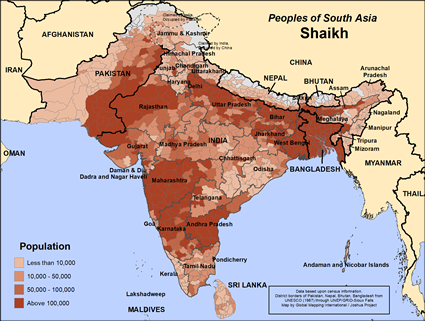The Shaikh, also known as Sheikhs, are a significant Muslim community in Bangladesh. Historically, the title "Shaikh" was given to those who were teachers or leaders in Islamic societies, and over time, it has become a common surname among Muslims in South Asia. The Shaikhs have a diverse ethnic background, with many claiming descent from Arab traders, Persian scholars, and Turkish conquerors who settled in the region centuries ago.
Shaikhs can have any number of urban or rural roles, so we can't describe their work lives. One source, however, attributes Shaikhs with traditional Muslim trading families.
They are among the elite in Bangladesh, and they are careful about whom they will marry. Women often carry the name “Bibi” and men are either called “Mohammed” or “Sheikh.”
The Shaikhs are very devout Muslims, and they are committed to the Islamic religious system. It is very difficult for them to consider any spiritual answers outside of Sunni Islam.
Much prayer is needed because the Shaikh see Christianity as an invading threat to their families and communities. Their high status in Muslim communities will also make it harder for them to understand their need for a sin-free savior.
Pray for a spiritual awakening among Bengali Muslims, that they may seek and encounter Jesus Christ. Pray for physical and spiritual protection for Shaikh followers of Jesus. Pray for effectiveness and fruitfulness in sowing God's word among Shaikh families leading to God's blessing spreading from household to household. Pray for many laborers to sow God's word among Shaikh households and extended families.
Scripture Prayers for the Shaikh in Bangladesh.
https://www.encyclopedia.com/philosophy-and-religion/islam/islam/sheikh
https://www.britannica.com/topic/sheikh
| Profile Source: Joshua Project |












